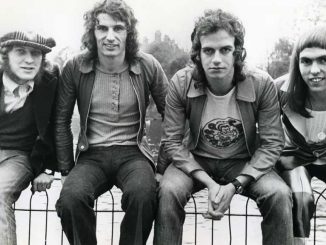
Headlines saying that young goths are at risk of depression is missing the point – that joining the goth tribe can be an incredibly positive influence

There’s a song on the Divine Comedy’s 2004 album Absent Friends called The Happy Goth, so named by Neil Hannon in the knowledge that for most people, the juxtaposition of those two words is at the very least an incongruity, if not an outright oxymoron.
“That music you play, I’m not saying it’s bad, it just seems terribly sad,” the mother and father of a teenage goth girl tell her, before asking, “Is everything all right?” with parental concern. “Don’t worry, Mum, don’t worry, Dad”, Hannon’s gothette assures them. “The hours that I spend alone are the happiest I’ve ever had.” There’s every chance that she’s telling the truth.
A report published in the Lancet on Friday pompted a series of headlines to worry parents: the BBC went with “Young goths at risk of depression”. On closer investigation, though, it rapidly became obvious that a more accurate headline might be “Young depressives at risk of goth”.
The Lancet article, an astonishing attempt to medicalise an entire youth subculture, was led by Lucy Bowes of Oxford University, and surveyed more than 3,000 teenagers from the Avon area. Its findings were that goths were three times more likely than non-goths to be clinically depressed by the age of 18 and five times more likely to self-harm. But the devil is in the detail. Specifically, the following extract: “Young people who self-identified as goths were more likely to be girls … [and] to have mothers with a history of depression, to have a history of emotional issues, including depression themselves, and to report issues with peers, including being bullied. Such vulnerability factors for depression suggest a degree of self-selection, with young people more susceptible to depression and self-harm being more likely to be attracted to the goth subculture.”
One thing that everyone surely understands, by now, is that goth is a symptom, not a cause. “I wear black on the outside because black is how I feel on the inside”, to quote the Smiths lyric. You feel like an alien, so you make yourself look like one. You feel hopeless, and you listen to music that expresses hopelessness, just to know that someone out there understands.
While the Lancet article does hypothesise a certain degree of “peer contagion” (a fantastic phrase that’s crying out to be used as a goth band name or song title), in other words suggesting that hanging around with other goths intensifies and worsens one’s existing propensity for gloom, it fails to recognise the positive effects: using your appearance cathartically to externalise your feelings, drawing succour from encountering art that expresses those feelings, and membership of a larger group of people who broadly share them.
And if the gloom of gothdom is to some extent self-perpetuating, obliging you to wear your sadness like a badge of honour, it also channels those feelings in a harmless way. It’s often an incredibly positive influence, providing outlets for creativity in the realms of painting, poetry, fiction, fashion, burlesque, tattooing, film and comic art as well as music.
Discussing the story on BBC Breakfast, Stacey Elder, a friend of Sophie Lancaster, the goth who was brutally murdered in Bacup in 2007, argued that “I don’t think you find it [goth]. I think it finds you.” That’s certainly how it was for me. I didn’t really know what a goth was when I arrived in London in the mid-80s, but one day, by chance, I saw a gaggle of people with big, backcombed black hair and dramatic make-up wandering along Oxford Street, and immediately thought: “These are my kind of people.” I had to know where they were going, so I literally followed them as they turned down Wardour Street to the Intrepid Fox, where in turn I found flyers and posters for clubs like the Kit Kat and Full Tilt, setting up the next seven years of my life. I had found my tribe, or my tribe had found me.
Whatever it was that united us, it wasn’t depression. Anecdotal evidence is the enemy of good science, but all I can tell you is that I and my gang of flamboyant romantic dandies spent every night of the week partying like the last days of Sodom, Gomorrah and Constantinople combined. If anyone was self-harming, we didn’t know about it (admittedly, it’s often secretive behaviour), and if there was any standing on the edge of the dancefloor looking lonely, that was just commonplace shyness, and nothing a cheap pint of snakebite and black couldn’t cure.
Admittedly, I was in the capital, where there was safety in numbers. Growing up somewhere more remote and being the Only Goth in the Village probably isn’t as much fun. That’s why I recently marched in Brighton’s Pride parade with the Queer Alternative, an organisation that aims to make LGBTQ people on the goth, rock and emo scenes, who thereby score highly with intersectional Top Trumps when it comes to social isolation, feel less alone.
The honest truth, however, is that in my three decades in and around the subculture, The Happy Goth is probably the rule and not the exception, as anyone attending this weekend’s Infest festival, or the Whitby Goth Weekend in October, can doubtless see for themselves.
If you’re a parent of a goth teenager and you’re alarmed by today’s headlines, worry not. Your children might, like Neil Hannon’s fictional heroine, be having the happiest time of their lives. And if they’re not, goth might just be the thing that saves them.
Via the Guardian




Be the first to comment